The Island of Makogai (pronounced Makongai)

Aurora_b
Mike and Liz Downing
Fri 20 Jul 2012 09:01
|
It's an interesting place. On going ashore the head
man of the marine research station gave us a tour around that part of the
island. It was a mix of new things built for their marine work in the
late 1990s and the old buildings from the leper colony that had closed
in 1960s. The colony was started in 1911 and by the time it closed
in 1969, 5,000 or so people from all over this part of the
Pacific had sheltered there. So lots of buildings - dormitories, hospital and
even a cinema - set out in a wide open area which is mostly grass today with
coconut palms dotted here and there. The diesel generator they
use to power their work today is the same Lister generator used by the
colony and is still going strong after 70 years or more. The main work
of the station today is to breed giant clams for redistribution around the reefs
of Fiji. The clams had almost disappeared having been over harvested, so their
aim is to reintroduce them. And by giant, we're talking 2 to 3ft across. It
was a good day to visit as it was one of the few days when spawning takes
place so we were able to see the work they do. The clams are protected
in concrete seawater ponds to start with and then in protective cages
in the bay until they're too big for their natural preditors. Then
they're sent to the reefs that need to be repopulated. They also rear baby
Hawksbill turtles until they're big enough to fend for themselves back in
the sea.
Following the tour there was just time for a snorkel on
one of the reefs in the bay. It was only a small isolated reef, but it was
covered in magnificent corals tightly packed together, with giant clams and
lots of reef fish. Despite the cold water (it was sundowners of hot chocolate
that day!) it was a gem and quite a surprise. We wished we could have stay
longer to explore the other reefs around the bay, but the next day we
had to make the most of a good day for sailing and move on otherwise
we'll get even further behind schedule.
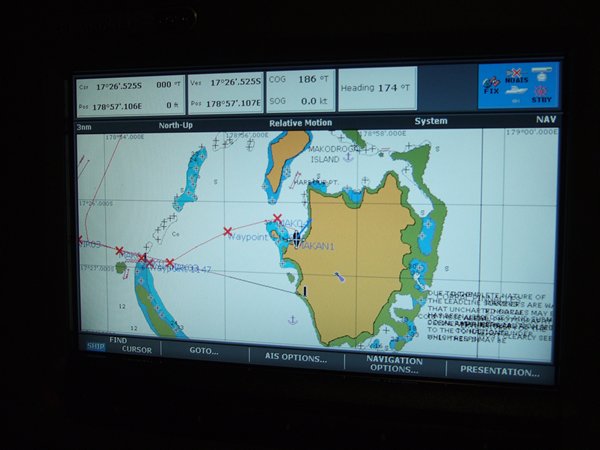 The chartplotter's view of the anchorage and
route into Makogai.
 Grey skies, but the reef and clear water can
still be seen. Although it looks like we are
on our own, there were 4 other yachts in the
anchorage.
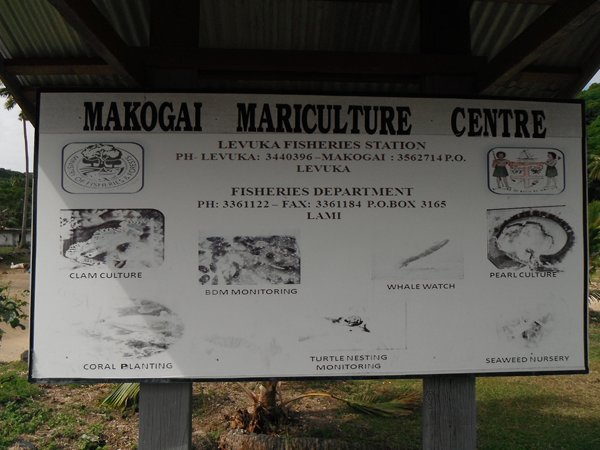 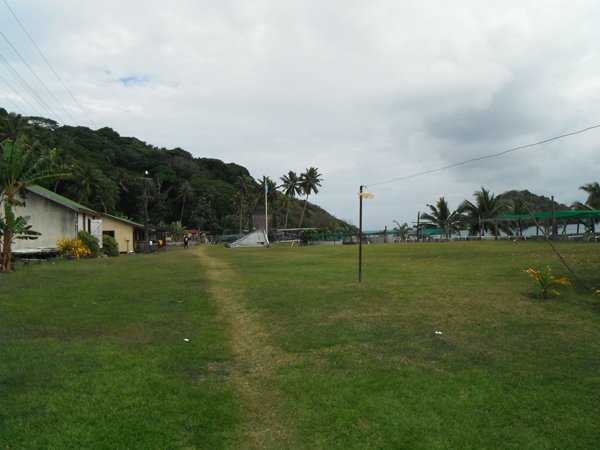 The 'main street' . The colony had been
quite big, but today the marine centre is run by just
7
people who live in some of the buildings
with their families.
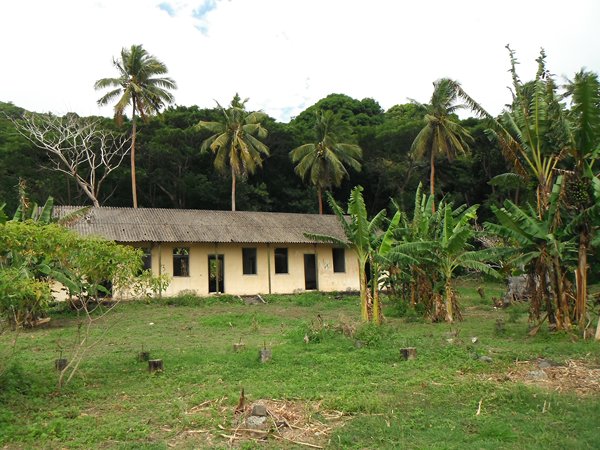 One of the unused
dormitories.
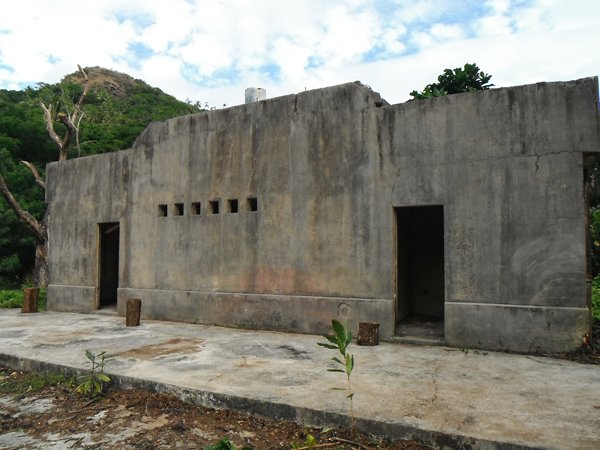 What's left of the cinema - with projection
room and holes. Apparently in its day it was
bigger
than the cinema in Suva, the
capital of Fiji.
 And the graveyard. The grave in the
forefront is of French nun Mother Marie Agnes
who ran the Leper
colony for 34 years and
died at the ripe old age of 85.
 Cassava plants - one of the staple crops
they grow here today.
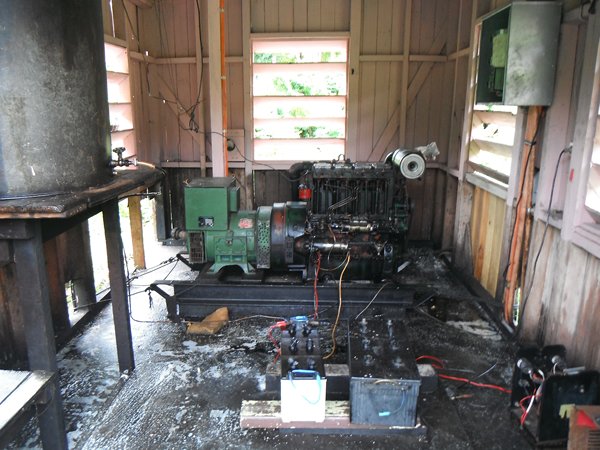 The old Lister generator provides their
power.
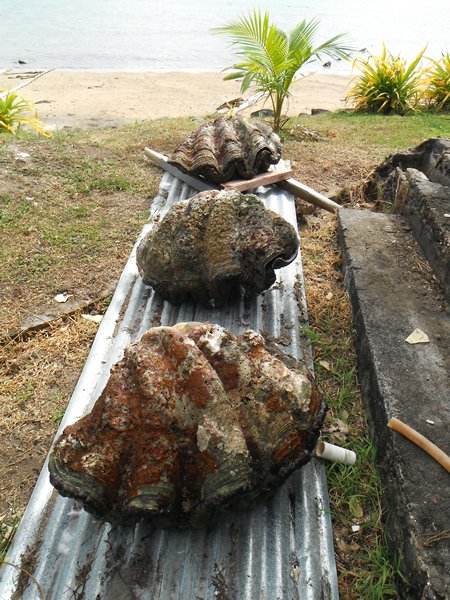 Giant clams taken out of the bay. They take
them out of the water for a few hours before spawning
as apparently it stresses them a bit and
they more readily spawn. It takes 2 or 3 big guys to carry
each
of these.
 Two smaller varieties of clam, also
being 'stressed'.
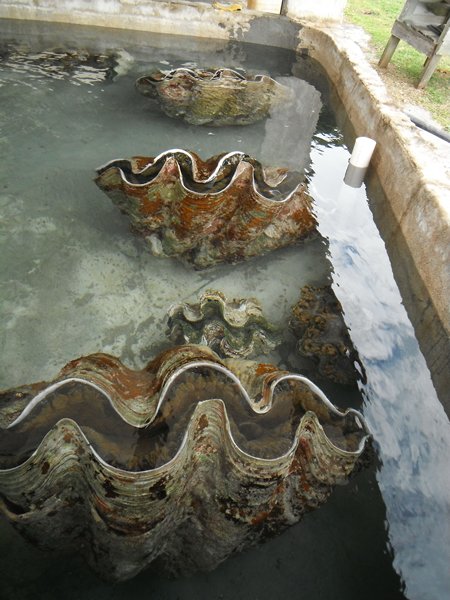 Having been 'stressed' they're put in the
spawning pools and everyone waits .....
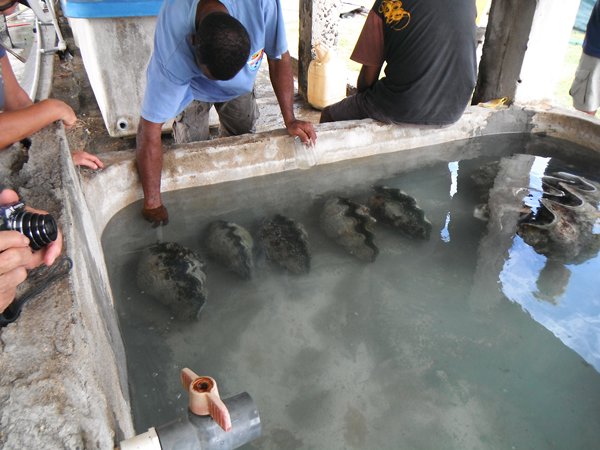 ......and if nothing starts to happen,
they're injected with hormones that hopefully start the
process
and it did, but it was
slow.
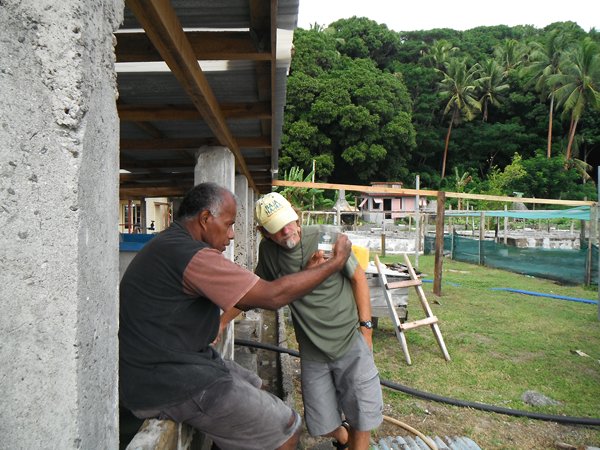 The head man and another cruiser checking
to confirm that eggs have started to be produced.
Then more
waiting. We decided
to see what we could see in the bay. The big
spawning
took place later in the
afternoon.
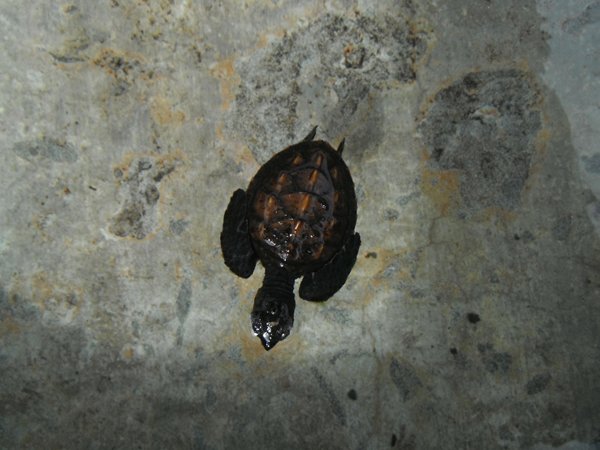 One of the tiny Hawksbill turtles they're
rearing.
 Baby Giant Clams, in protective cages in the
bay.
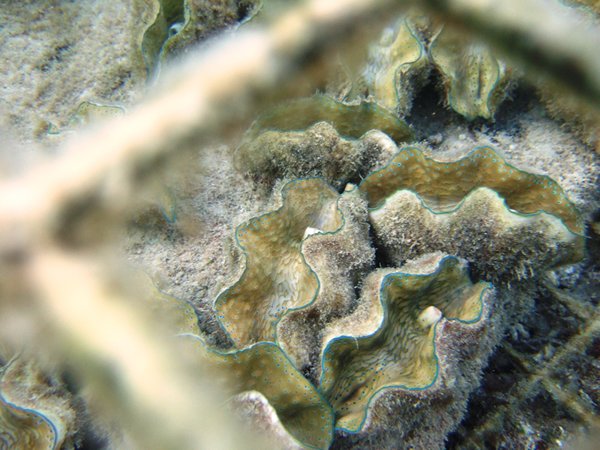 Older ones also
protected.
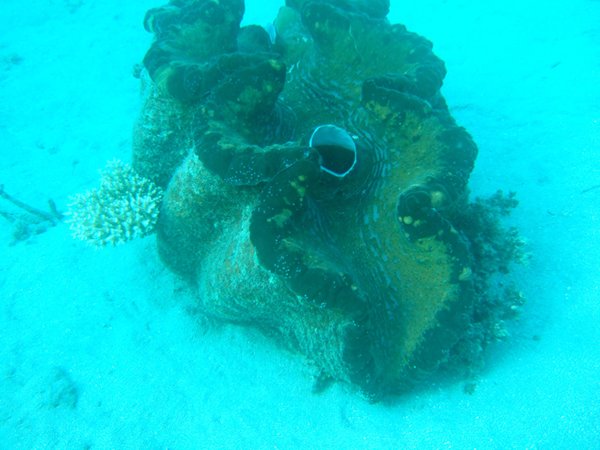 A number of Giant Clams that they use
for spawning have been brought to the bay
just in front of the marine centre, so they
can more easily be taken ashore and returned to
the sea.
 Out on the reef a clam firmly imbedded in
the coral.
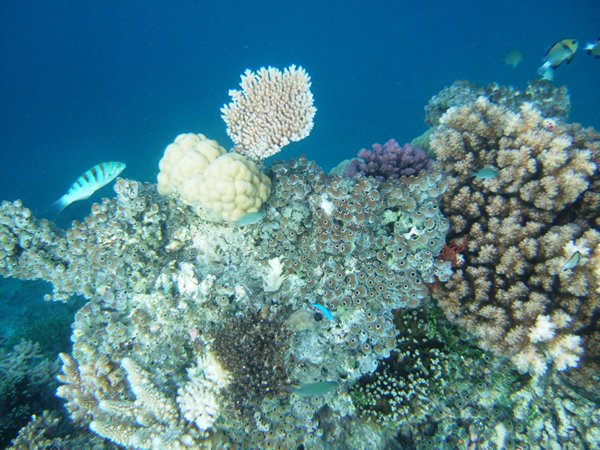 It was only a small reef, but very
pretty.
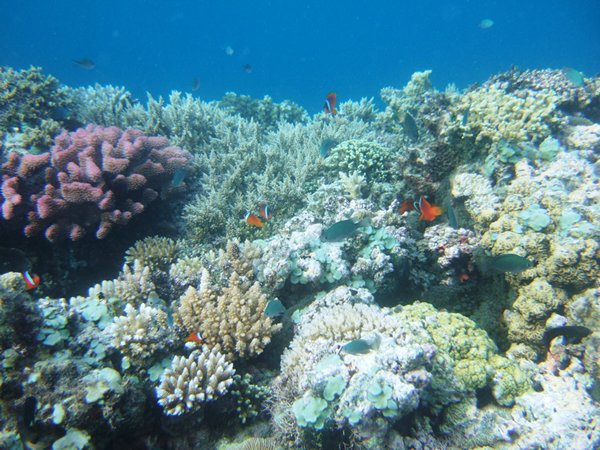 Although the top of the reef was relatively
close to the surface, it was in deep water
which made the background a lovely shade of
blue.
 Teeming with Blue
Chromis.
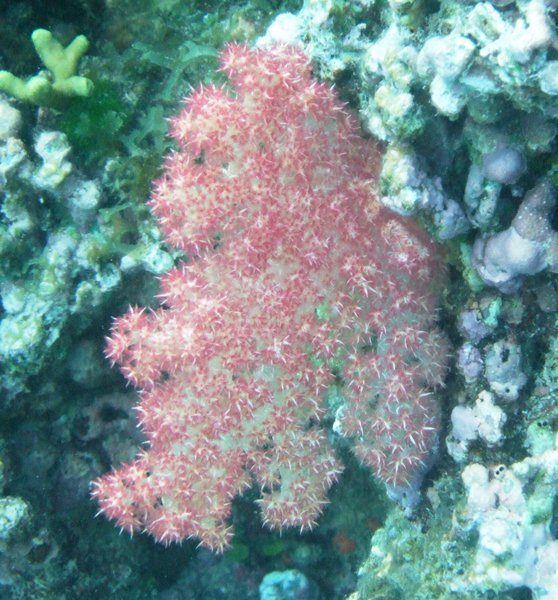 And a bit of soft coral here and
there. The reef was predominantly hard coral.
 Lots of anemones and clown
fish.
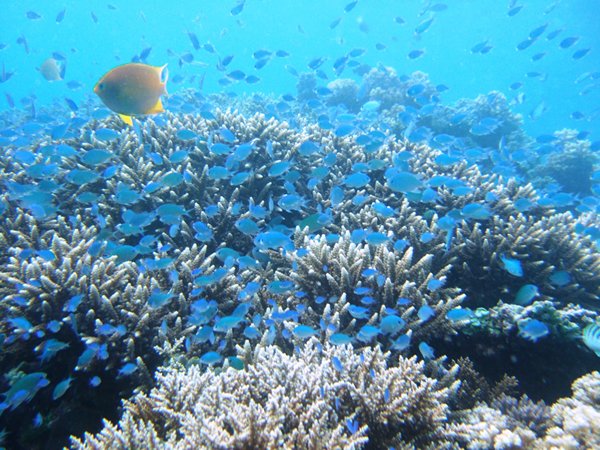 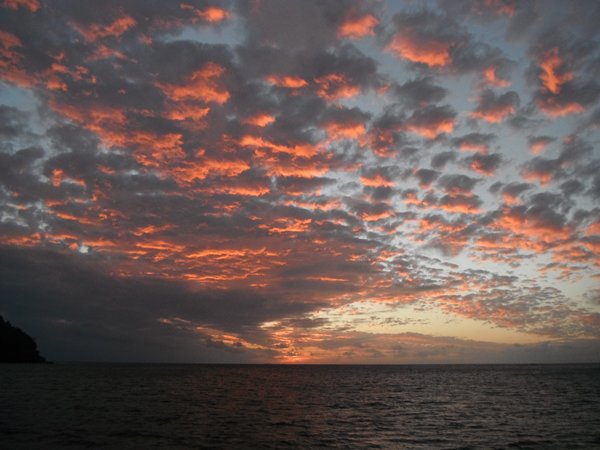 At the end of the day the clouds finally
started to break up and it was a good sunset.
'Red sky at night' works here too, so
we hoped for a much better day in the morning,
and it was!
|